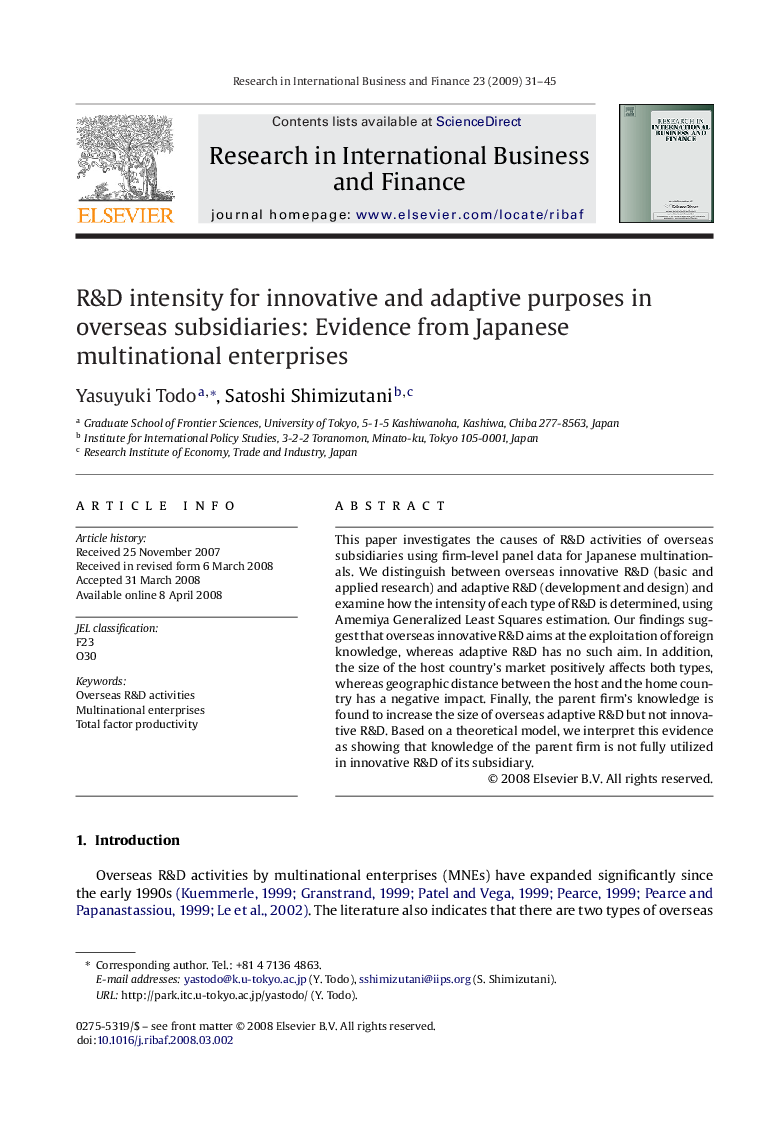| Article ID | Journal | Published Year | Pages | File Type |
|---|---|---|---|---|
| 1003598 | Research in International Business and Finance | 2009 | 15 Pages |
This paper investigates the causes of R&D activities of overseas subsidiaries using firm-level panel data for Japanese multinationals. We distinguish between overseas innovative R&D (basic and applied research) and adaptive R&D (development and design) and examine how the intensity of each type of R&D is determined, using Amemiya Generalized Least Squares estimation. Our findings suggest that overseas innovative R&D aims at the exploitation of foreign knowledge, whereas adaptive R&D has no such aim. In addition, the size of the host country’s market positively affects both types, whereas geographic distance between the host and the home country has a negative impact. Finally, the parent firm’s knowledge is found to increase the size of overseas adaptive R&D but not innovative R&D. Based on a theoretical model, we interpret this evidence as showing that knowledge of the parent firm is not fully utilized in innovative R&D of its subsidiary.
